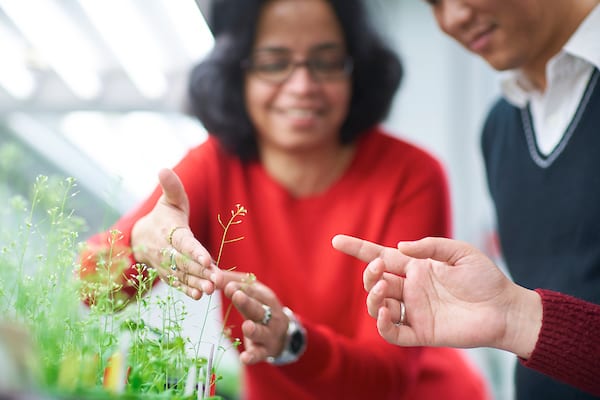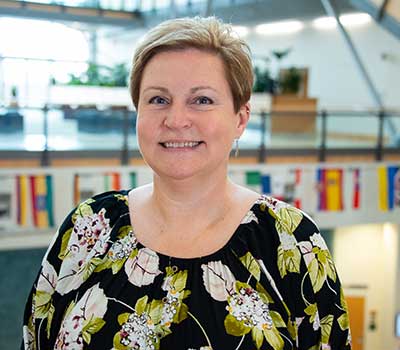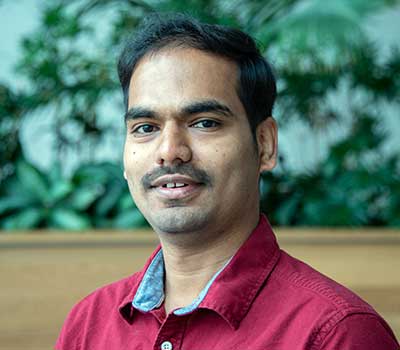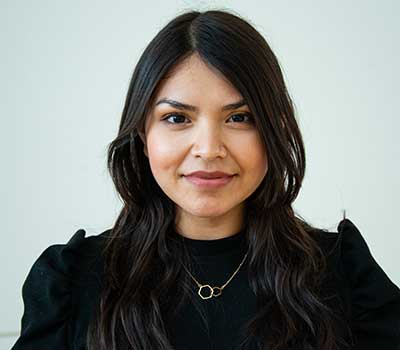The World Beneath a Microscope
When Sona was a child, her mother explained to her that a cup of yogurt contains millions of living organisms called microbes.
“I was in complete disbelief that we were eating something that had bugs in it,” says Sona. Her mother explained that these bugs were so small that you needed a microscope to see them. “That was a profound moment in my life, understanding that there are things in the world that are vital to our existence, but that you cannot see without the assistance of something else.” Throughout Sona’s childhood, her parents and some phenomenal teachers encouraged her to be curious and ask questions, and soon she became fascinated with science.
A New Frontier
Chemistry was Sona’s favorite subject, but as she was getting ready to start her master’s degree, a new course was coming out that was the first of its kind in India: biotechnology. “It was a very cross-disciplinary program. I got to take classes in medical sciences, botany, chemistry, zoology. It was all very exciting,” she explains. After successfully competing for fellowships and entrance examinations for PhD programs, when she met her PhD advisor, she knew that plant science was the right fit: “He studied signaling and used biochemistry and molecular biology to understand how plants perceive light and how they respond to it. His science was interesting, but it was his approach to teaching science and mentoring students that made it very easy for me to decide what I wanted to do.”
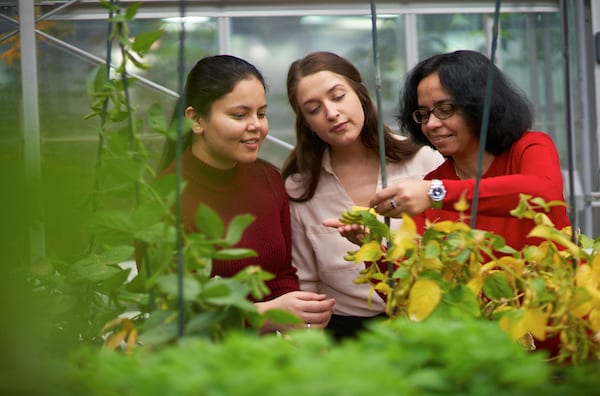
Understanding How Plants Sense their Surroundings
Today, Sona’s lab is interested in understanding how plants sense changes in their environment, like light, temperature, humidity and even microbes. As humans, we can sense that it is too cold outside and walk indoors where it is more comfortable. Plants don’t have that ability, so they have to modify what they are going to do within the environment. “The question my lab is asking is how are plants sensing a change in their surroundings and then what are some of the first changes that take place to respond?” To do this, Sona’s lab specifically looks at the proteins involved in sensing environmental changes, called G proteins. Her lab studies the signaling mechanisms of G proteins , and how that ultimately affects plant growth and development.
As our environment changes and the population continues to grow, Sona’s work is becoming even more critical to feeding the world. In order to understand how a plant responds to changing environmental conditions like high temperatures, drought, or low nutrient availability, we need to know what is happening within the plant. Once we understand that, then we can improve the plants to be able to respond better to stress. In the future, this could mean that we may be able to grow crops in conditions that were previously uninhabitable. Not only could Sona’s research help plants respond to stress, it could also result in improved yield under normal conditions. “Our goal will always be to make plants survive better with lower inputs and under stressful conditions, while still maintaining or improving yield,” explains Sona.
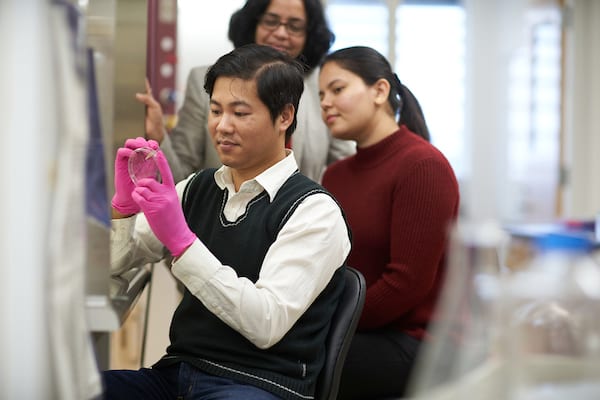
Inspiring More People to Ask Questions
In addition to her research, Sona is passionate about fostering the next generation of scientists. For the past eight years, she has helped lead our Research Experience for Undergraduates internship program, which creates hands-on scientific opportunities for nearly twenty students from across the country each year. “Whenever I see that I can make even a small change in someone’s perspective to pursue science, it gives me a lot of satisfaction.” By investigating her own scientific questions and inspiring students to ask their own, Sona is working to improve the future of our planet through the power of plants.
